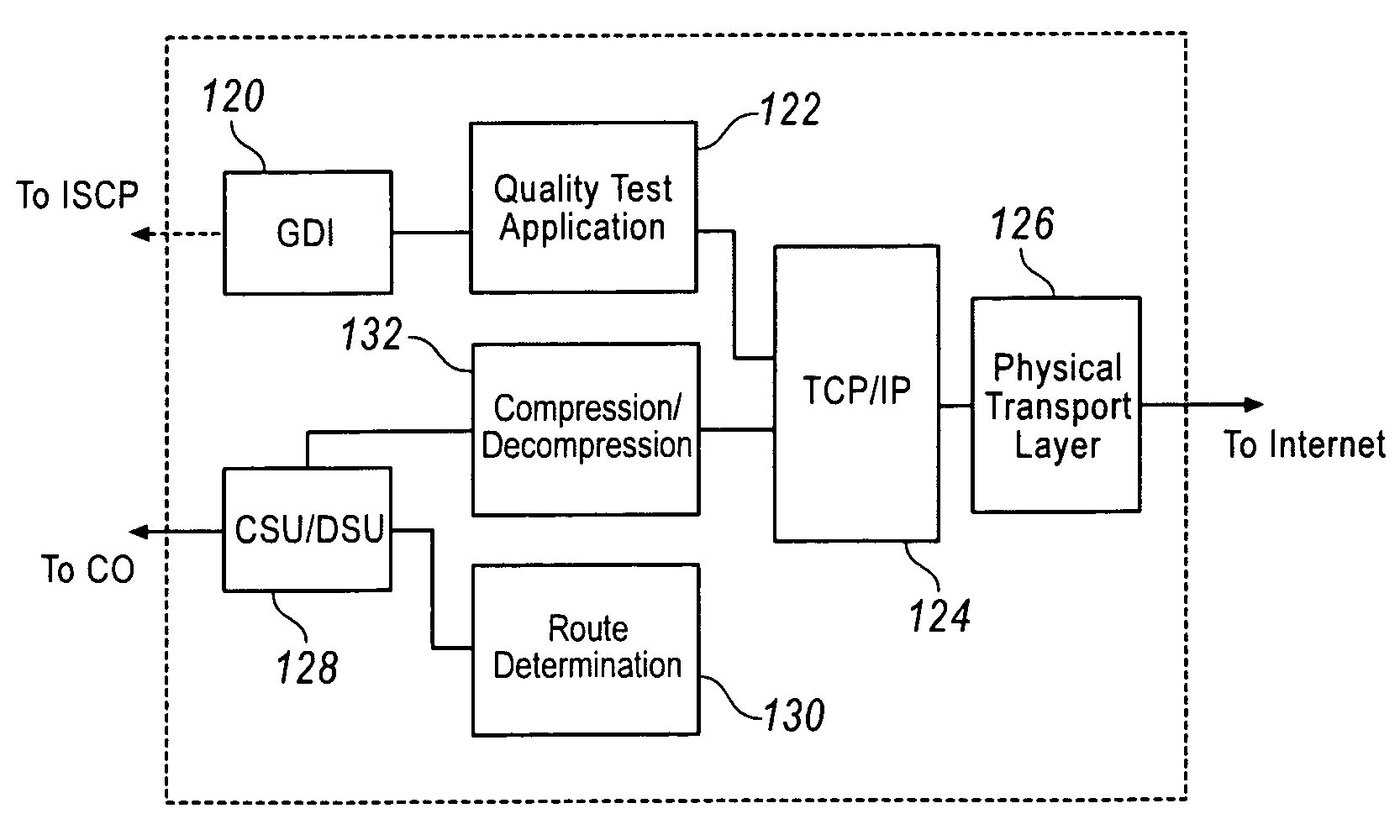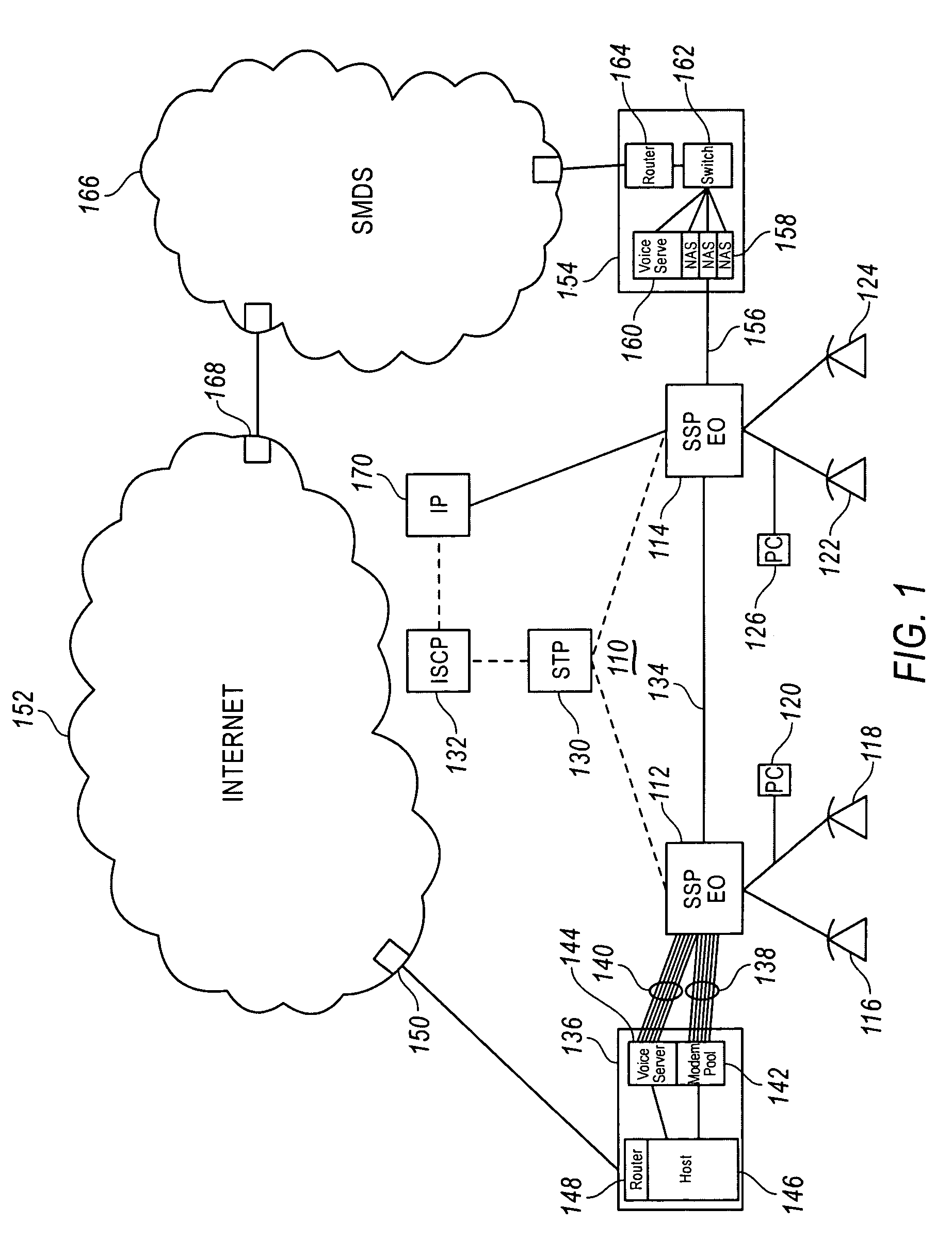Telephony communication via varied redundant networks
a technology of redundant networks and telephones, applied in data switching networks, frequency-division multiplexes, instruments, etc., can solve problems such as overload or breakdown of interrelated systems, complex actual internet architecture, and increased usage even faster, and achieve the effect of enhancing reliable telephony services
- Summary
- Abstract
- Description
- Claims
- Application Information
AI Technical Summary
Benefits of technology
Problems solved by technology
Method used
Image
Examples
Embodiment Construction
[0041]Applicant's above identified copending parent application Ser. No. 08 / 634,543, filed Apr. 18, 1996, Public Internet Protocol Transport Network, describes a dual PSTN and Internet communication system which provides a network and methodology for facilitating telephone use of the Internet by customers on an impromptu basis. Provision is made to permit a caller to set-up and carry out a telephone call over the Internet from telephone station to telephone station without access to computer equipment and without the necessity of maintaining a subscription to any Internet service. Usage is made of CCIS (common channel interoffice signaling) signaling to set up the call and establish the necessary Internet connections and addressing. Calls may be made from telephone station to telephone station, from voice capable computer to voice capable computer, or from telephone to computer or computer to telephone.
[0042]Applicant's above-identified copending parent application Ser. No. 08 / 698,7...
PUM
 Login to View More
Login to View More Abstract
Description
Claims
Application Information
 Login to View More
Login to View More - R&D
- Intellectual Property
- Life Sciences
- Materials
- Tech Scout
- Unparalleled Data Quality
- Higher Quality Content
- 60% Fewer Hallucinations
Browse by: Latest US Patents, China's latest patents, Technical Efficacy Thesaurus, Application Domain, Technology Topic, Popular Technical Reports.
© 2025 PatSnap. All rights reserved.Legal|Privacy policy|Modern Slavery Act Transparency Statement|Sitemap|About US| Contact US: help@patsnap.com



